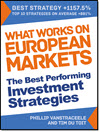This post shows you exactly how a proven system turned fear into profit. In 2023, while most investors avoided UK retail, the Shareholder Yield Letter spotted Tesco as a strong opportunity.
You will learn how disciplined rules, a focus on dividends plus buybacks, and clear risk controls led to a 51.3% total gain. This case study shows you how to find high-quality, income-producing stocks even in uncertain markets, while protecting yourself with smart risk management. If you want low-stress, data-driven investing that works when others panic, this article will show you how.
Estimated Reading Time: 6 minutes
Case Study: How the Shareholder Yield Letter Spotted Tesco Before It Surged +51.3%
In early 2022, inflation was front-page news. Russia’s invasion of Ukraine sent energy and food prices soaring. Many investors feared the worst for consumer-facing businesses. Supermarkets like Tesco seemed stuck between rising costs and price-sensitive shoppers.
Would grocery profits collapse? Would consumers trade down or cut back entirely? That was the dominant narrative. But on 14 November 2023, the Shareholder Yield Letter saw something different. And it led to a standout investment.
The Setup: Panic Over Inflation
The UK media was filled with fear:
-
Grocery inflation hit double digits.
-
Supermarkets were under political pressure to “help consumers.”
-
Analysts questioned if margins could survive the squeeze.
Most investors avoided UK retail altogether.
The Contrarian Insight
The Shareholder Yield Letter follows a simple but powerful rule:
Only buy when the market is rising and only buy large-cap companies returning cash to shareholders.
In November 2023, that led us to Tesco PLC. Here is what our system saw:
-
Shareholder Yield of 8.8% (Dividends 4.0% + Buybacks 4.8%)
-
£750 million buyback program underway, with strong follow-through
-
Dividend stability - interim and full-year dividends were maintained
-
Adjusted profits up 14%, despite inflation
-
EPS growth of nearly 17%, backed by strong cash flow
Most importantly, Tesco’s valuation had not kept up with its resilience. Investors were focused on macro fears, not company fundamentals.
The Result
From the newsletter recommendation on 14 November 2023 through 18 July 2025, Tesco delivered:
-
+4.6% in 2023
-
+31.0% in 2024
-
+15.7% in 2025 (YTD)
-
Total gain: +51.3%, including 7.9% from dividends
All while offering defensive stability in a volatile macro environment.
Click here to sigh up for the Shareholder Yield Letter NOW! - Click here
Why It Worked
The Shareholder Yield Letter relies on a time-tested process, not gut feeling:
-
Only buys during market uptrends
-
Targets large, financially solid companies
-
Focuses on shareholder returns (dividends + buybacks)
-
Uses a strict checklist to filter for financial health and valuation
-
Ignores headlines—follows data
This system does not get distracted by media narratives. It buys businesses that are quietly giving shareholders the highest payout.
Protecting Against the Unknown
Of course, not every idea works this well. No investment strategy is right all the time. That is why we follow strict risk controls:
-
We only buy when the market is above its 200-day moving average.
-
We sell immediately if any stock drops more than 20% from its highest price (trailing stop-loss).
This keeps big losses small and lets winners run.
As of June 2025, investment ideas in the Shareholder Yield Letter with gains of over 20% outnumbered losses of more than 20% by 10.3 to 1. To be exact:
-
31 ideas returned over 20%.
-
Only 3 ideas lost more than 20%.
This is not magic. It is discipline, data, and a proven process working for you.
The Takeaway for You
This is not just about Tesco. It is about what a proven system can do when others panic.
If you want:
-
High-quality stocks
-
Low-stress, income-focused investing
-
Protection from emotional decision-making
Then the Shareholder Yield Letter is built for you.
You can succeed with a strategy that prioritises discipline, data, and shareholder-first companies. Start your journey to low-stress, high-yield investing today.
Click here to sigh up for the Shareholder Yield Letter NOW! - Click here
FREQUENTLY ASKED QUESTIONS
1. How did the Shareholder Yield Letter see Tesco differently from everyone else?
Most investors focused on headlines about inflation and politics. The Shareholder Yield Letter looked at cash returns to shareholders. Tesco was buying back £750 million of stock, paying a 4% dividend, and growing earnings despite inflation. That signalled strength the market was ignoring.
2. Why does the system only buy when the market is rising?
Markets move in trends. When markets fall, even good stocks drop because investors sell everything at once. Waiting until the MSCI World Index is above its 200-day moving average keeps you from buying into market panic. This reduces big losses and stops you from fighting the trend.
3. Why focus on dividends and buybacks instead of just dividend yield?
Dividends are only part of the return. Buybacks reduce the number of shares, which increases each shareholder’s claim on earnings. This can push the stock price up and is often more tax-efficient. Tesco’s 4.8% buyback added as much value as its 4% dividend.
4. How do stop-loss rules protect me?
The Shareholder Yield Letter uses a 20% trailing stop-loss. If a stock drops 20% from its high, it is sold. This prevents a small loss from turning into a large one. It also lets your winners keep running, like Tesco’s 51.3% gain.
5. Can this strategy work for retirement income?
Yes. The portfolio focuses on large, stable companies with high shareholder yield. These companies often have reliable dividends and strong buybacks. That creates steady cash flow while still growing your capital, deal for retirement.
6. What if the market crashes after I invest?
The market filter and stop-loss work together to protect you. The system stops adding new stocks when markets turn down. Existing stocks have trailing stops to limit losses. This reduces the risk of a portfolio wipe-out during a crash.
7. How much time do I need to follow this strategy?
Very little. The Shareholder Yield Letter does the heavy lifting. You just need to place trades when there is a buy or sell signal. Most subscribers spend less than 30 minutes per month managing their portfolio.
Click here to sigh up for the Shareholder Yield Letter NOW! - Click here


